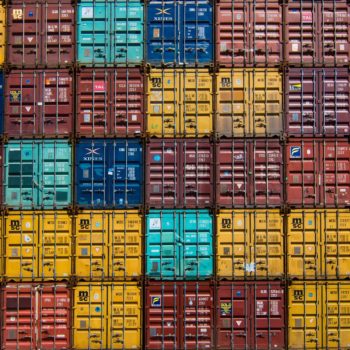 Global supply chain disruptions continue in the new year.
Global supply chain disruptions continue in the new year.
The COVID-19 pandemic has certainly made visible the weak links in global supply chains. For two years now businesses have felt the ever-increasing strain of supply chain disruptions. With the pandemic and subsequent lockdowns continuing in China, the Beijing Olympics and the Lunar New Year all on the horizon, it is looking like reprieve isn’t on the immediate horizon.
The Root Cause of Supply Chain Disruptions
The COVID-19 pandemic has been the root cause of the supply chain crunch around the globe. The different COVID-19 variants have led to prolonged manufacturing shutdowns and slowdowns which has put stress on supply chains and businesses.
Almost all industries have seen longer production times due to a number of factors, such as: a reduction in raw material production, part/component availability, reduction in labor, and shipping. These ongoing issues have challenged manufacturers to evaluate their product lines and potentially shift production to certain products that have lower production times with higher sales turnover. Reduction in production may lead manufacturers to focus on certain product lines and potentially discontinue production of particular products that require more labor or raw materials to produce.
The Challenges on the Horizon
Things are likely to get more challenging based on Beijing’s response to Omicron—particularly when coupled with ongoing logistics constraints, Lunar New Year’s and the Beijing Winter Olympics. Any one of these events could disrupt supply chains with origins in China, but together they have the potential to be the perfect storm. (Industry Week)
Omicron Slowdowns & Lockdowns. Outbreaks across China have triggered manufacturing plant shutdowns. The ports in China have also seen bottlenecks due to Omicron. While cargo ships continue to backup in California ports as well. “Spread out across 1,000 miles of North American coastline, stretching deep into Mexico, there are 101 boxships anchored or loitering, waiting for space at America’s twin top gateways, according to the latest data from the Marine Exchange of Southern California.” (Splash 24/7)
Lunar New Year. The Lunar New Year is an important celebration in most Chinese communities. Many families, immediate and extended, come together to celebrate. Traditionally, businesses close during this time to allow for celebrations. The celebration occurs on January 31and February 1; however, most businesses close for at least a week.
Beijing Winter Olympics. In order to improve air quality around certain Olympic venues, there is the possibility that supplier plants may be forced to stop production for a period of time. The general rules around the Olympics may result in proactive lockdowns during or immediately after the games.
Manufacturing in China has certainly come with additional challenges during the pandemic. The global supply chain is working to recover, however it will take time. If you have thought about reshoring your manufacturing operations, read our top considerations here.
Have additional questions about domestic or international manufacturing? Send us an email at info@3d-innovations.com
______
3D Innovations is a Product Development Company – from the 3D Design to a fully functional 3D Prototype & Product.

